A) The leaves must be picked up by wind or animals and carried to a desert.
B) The leaves must be buried slowly so that the leaves can begin to rot.
C) The leaves must be buried rapidly in order to keep out oxygen.
D) The leaves will never be preserved as they do not contain hard parts.
Correct Answer

verified
Correct Answer
verified
Multiple Choice
Which of the following is a brachiopod? 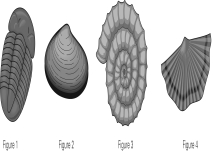
A) Figure 1
B) Figure 2
C) Figure 3
D) Figure 4
Correct Answer

verified
Correct Answer
verified
Multiple Choice
If a volcanic eruption occurs that blocks out some of the sunlight long enough for many plants to die,what (if anything) will happen to the carnivorous animal species?
A) They will eventually die along with many other species in the food chain.
B) The carnivorous animals will need to adapt to eat other plant species.
C) They will die from the drop in temperature before the plant deaths affect them.
D) Nothing will happen; carnivorous animals will not be affected by plant death.
Correct Answer

verified
Correct Answer
verified
Multiple Choice
What type of fossil forms when a buried organism decays or is dissolved,but the original shape is preserved in the sediment?
A) body fossil
B) trace fossil
C) mold fossil
D) cast fossil
Correct Answer

verified
Correct Answer
verified
Multiple Choice
Which of the following statements regarding the fossil record is FALSE?
A) Not every minute of Earth's history is recorded in the rock record.
B) The fossil record does not contain any fossil remains of plants, only animals.
C) Not all organisms have a high preservation potential.
D) Paleontologists have not yet found all the fossils that are in the rocks.
Correct Answer

verified
Correct Answer
verified
Multiple Choice
What type of fossil is composed of footprints or burrows?
A) mold or cast
B) chemical fossil
C) trace fossil
D) body fossils
Correct Answer

verified
Correct Answer
verified
Multiple Choice
When the last member of a species dies,this is called __________.
A) fossilization
B) natural selection
C) extinction
D) preservation
Correct Answer

verified
Correct Answer
verified
Multiple Choice
If a Mastodon dies while walking along a river,what needs to happen in order to preserve the body as a fossil?
A) A drought must occur so that sediment can be blown over the body.
B) A flood must occur so that sediment can wash over the body.
C) No changes are necessary; it will be preserved just by being near a river.
D) The body must be carried away by scavengers to another location.
Correct Answer

verified
Correct Answer
verified
Multiple Choice
In which of the following rocks might you find fossils?
A) gneiss
B) limestone
C) granite
D) marble
Correct Answer

verified
Correct Answer
verified
Multiple Choice
If two animals are members of the same kingdom,how closely are they related in comparison to two animals that are members of the same genus?
A) Animals of the same kingdom are less closely related than those of the same genus.
B) Animals of the same kingdom are more closely related than those of the same genus.
C) There is no way to tell how closely related either are without more information.
D) Animals of the same kingdom are not related at all.
Correct Answer

verified
Correct Answer
verified
Multiple Choice
Which of the following would NOT be considered a fossil? 
A) Figure 1
B) Figure 2
C) Figure 3
D) Figure 4
Correct Answer

verified
D
Correct Answer
verified
Multiple Choice
Which of the following is NOT necessary in order to be preserved as a fossil?
A) hard parts
B) rapid burial
C) anoxic environment
D) tough skin or fur
Correct Answer

verified
Correct Answer
verified
Multiple Choice
Petrified wood is a type of ________________.
A) permineralized organism
B) chemical fossil
C) trace fossil
D) body fossil preserved in tar
Correct Answer

verified
Correct Answer
verified
Multiple Choice
Which of the following is an example of natural selection?
A) birds that evolve a new beak style in order to exploit a different food source
B) the extinction of the Mammoths due to hunting by a new predator
C) fossils of trilobites that have the same morphology but are separated by millions of years
D) the mass extinction of the dinosaurs due to a meteorite's impact 65 million years ago
Correct Answer

verified
Correct Answer
verified
Multiple Choice
At least five of these have occurred in Earth's history,one of which occurred 65 million years ago and wiped out the dinosaurs.
A) mass extinction event
B) punctuated equilibrium
C) millennia-long drought
D) phylogenetic extinction
Correct Answer

verified
Correct Answer
verified
Multiple Choice
What type of fossil is shown in the picture? 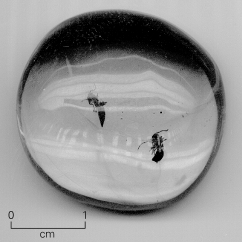
A) body fossil
B) trace fossil
C) mold fossil
D) cast fossil
Correct Answer

verified
A
Correct Answer
verified
Multiple Choice
The following is an example of what type of fossil? 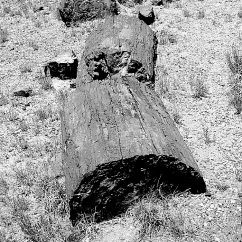
A) trace fossil
B) permineralized organism
C) carbonized impression
D) mold or cast fossil
Correct Answer

verified
B
Correct Answer
verified
Multiple Choice
Why is the preservation potential of feathers so low?
A) because birds usually die in dry environments
B) because birds do not contain hard parts
C) because virds are very small and thus are not well preserved
D) because birds die in forests, areas with high oxygen levels
Correct Answer

verified
Correct Answer
verified
Multiple Choice
What type of fossil is shown in the picture below? 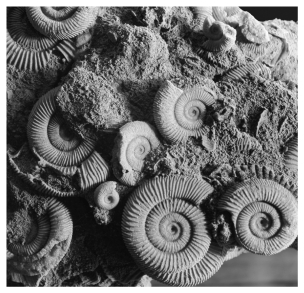
A) impressions
B) mold fossils
C) cast fossils
D) trace fossils
Correct Answer

verified
Correct Answer
verified
Multiple Choice
The following picture is of what type of fossil? 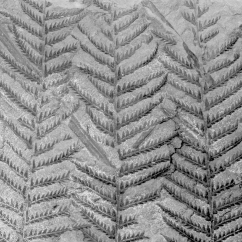
A) carbonized impression
B) dried body fossil
C) mold or cast
D) permineralized organism
Correct Answer

verified
Correct Answer
verified
Showing 1 - 20 of 25
Related Exams